Nepal stands as the leading party in a world full of tourism possibilities. The country is beautiful in terms of nature and culture but also terms of hospitality and manners. It is a perfect place to get rid of your hectic daily plans and schedules. From luxury tours to mountain climbing, Nepal offers all kinds of travel prospects within the country. As we talk about trekking, Annapurna Base Camp, Everest Base Camp, Manaslu Base Camp, and Everest Three Passes are prioritized. Looking further east from these destinations, we can find the Kanchenjunga region, which also carries great significance in tourism and prosperity. But before you embark on Kanchenjunga Trek, you should know the facts about the region, and knowledge about its difficulty also falls under it. So what is Kanchenjunga Trek Difficulty? Let’s Explore this in Detail.
Kanchenjunga Trek revolves around the third-highest peak in the world, Kanchenjunga. Starting from the town of Taplejung district, this trek takes you to the peak’s base camp.
During the trek, you will get a chance to experience the mountain ranges, picturesque villages, forests, and terraced green fields. Most prominently, you will focus on the stunning views of the Kanchenjunga range, including other peaks like Makalu and Everest. Also, this trek is a perfect way to assimilate, as you will have the opportunity to be involved in cross-cultural activities. You will be within the Limbu and Sherpa communities, which have their own distinct culture, language, and region of settlement.
During the trek, you will be hiking within the Kanchenjunga Conservation Area, which has an area of 2035 square kilometers. And you may see some endangered animals like snow leopards, Danphe munal pheasant, and other species.
If you are planning to do the Kanchenjunga Trek, it is recommended to have a proper assessment before. Having prior knowledge of the things that go around the region will make your trek easier. So what are the things that you should know about Kanchenjunga Trek Difficulty? This blog will discuss it more.
Grading the Difficulty Level of the Kanchenjunga Trek
Kanchenjunga Trek is classified as one of the most challenging treks in Nepal. With this, you will have to make your way through some of the treacherous landmarks in the region. Most of your trek is within the rural and remote parts of eastern Nepal, so your state of survival is more strenuous than other treks.
Kanchenjunga Trek takes you to the highest point, located at 5150 meters, and reaching there is a challenging job. It follows up with over 6 hours of daily hikes through rugged and sloppy landscapes. Similarly, dense forests, glacial rivers, and rocky terrain are some of the factors that might make your trek more challenging.
There are two base camps: North and South, and the Kanchenjunga trek covers both base camps. Most short-lived hikes only cover one base camp. Mountaineers and trekkers have rated the North Base Camp to be more complex than the South Base Camp in terms of difficulty.
Kanchenjunga Trek Difficulty is more elapsed by the time of your travel. During the off-season times like monsoon or the winter, you might need help to reach the Kanchenjunga Base Camp.
What Makes Kanchenjunga Trek Difficult?
Kanchenjunga Trek Difficulty is more than just defined by one aspect – several factors make Kanchenjunga Trek difficult. Factors like landscapes of the region, time of year, climate, and weather, impact the difficulty level of this trek.
Similarly, your mental and physical conditions might also adversely impact your trip. Here are some of the lists that are responsible for making the Kanchenjunga Trek Difficult.
Weather Challenge
Weather and climate play significant roles in making your Kanchenjunga Trek difficult. Spring and Autumn seasons are considered the best to trek around this region; however, if you do this in off seasons like summer, monsoon, and winter, you must be well prepared.
Summer and monsoon seasons bring heavy rainfall in Nepal, including the Himalayan region. This means that your trek can be hampered because of the rainfall. Also, natural calamities like landslides and stream floods occur during this season. Similarly, the climate is frigid in winter, and the temperature drops below 0 degrees Celsius. It will make your living very complex in the Kanchenjunga area. The wind is very sharp during the winter, and the heavy snowfall can lead you to suffer from altitude sickness and injuries like frostbite and more. Moreover, the Himalayan region is likely to have avalanches in the winter season, which can cause a lot of distraction and loss.
Ice and Snow Climb Challenge
This challenge is faced by trekkers mainly during the winter season. During this season, the climate is very cold and features heavy snowfall around the Himalayan region. Since Kanchenjunga Trek is based in the Himalayan area, heavy snowfall during the winter is normal here.
This makes the routes slippery and challenging to walk, impacting your trek. You might have to climb the icy rocks and cross frozen streams in some high altitudes. So you should be prepared well for that.
Altitude Sickness Risk at High Altitudes
Altitude Sickness is the most common illness that follows up trekkers and climbers at high altitudes. It is mainly caused due to lack of oxygen and your body resisting to adjust on higher elevations. Symptoms like nausea, vomiting, and dizziness will appear if you suffer from altitude sickness. In some cases, people also suffer from extreme illnesses like High Altitude Cerebral Edema (HACE) and High Altitude Pulmonary Edema (HAPE).
The air is thin at a high altitude, and you will find a depleted amount of oxygen. It will make the human body hard to breathe, which leads to illness. It is most prominently seen during winter; however, trekkers can suffer from it anytime.
Physical Challenge
The physical challenge is the most significant part of the Kanchenjunga Trek Difficulty. It can be hazardous if you have no energy and stamina left to carry on to the base camp of Kanchenjunga. Whether in a group or solo, having bad physical fitness will cost you a lot during the treks, and Kanchenjunga is the most challenging trek of all and will not separate you from the challenges.
Your trekking starts from Taplejung, and walking more than 6 hours daily will drain your body’s strength. If this is your first time trekking, you might feel it is very complex, but with enough rest and acclimatization, you can continue the journey.
Mental Challenge
It might be problematic if you have a negative mindset regarding the Kanchenjunga Trek difficulty citing that hurdles might get you apart from the successful trek. You should be aware that you should always push yourself ahead and carry a positive mindset, even in a distracting environment, so that you will reach the base camp of Kanchenjunga successfully. You should know the possible regional dangers and prepare accordingly, making your trek handier.
How Can You Overcome Kanchenjunga Trek Difficulty?
Acclimatize
You should always focus on acclimatization after you elevate certain altitudes during the Kanchenjunga Trek. You should emphasize taking enough rest, drinking plenty of water, and eating nutritious food.
Lung Training Exercises
Altitude Sickness is real and dangerous – so if you train your lungs to adjust to the high altitude, your trek will become meaningful. Do cardio exercises, cycle, and expose yourself to high altitudes. It will help you better.
Follow The Instructions of Your Guide
Your guide isn’t there for you for nothing – they have specific responsibilities. So they will instruct you to do things as per their instructions, ensuring your safety. So we recommend that you follow the target suggestions of your guide and try everything correctly during the trek, or you may get in trouble.
Avoid Alcohol and Narcotics
Since you will be involved in a long hour of hiking, your body will be drained physically and mentally. At this time, taking alcoholic and narcotic products is a lousy decision, so avoid them to retain your energy and stamina. And rest will be assured.
What Are Required To Reduce Kanchenjunga Trek Difficulty?
Kanchenjunga Trek is a challenging task- trekkers must be very sensitive and heavily prepared before taking on this trek.
For instance, physical fitness and trekking experience will be enough, but several other factors are essential for this trek. It might be helpful physically, naturally, spiritually, and culturally.
Some skills that are necessary for the Kanchenjunga Trek are:
Trekking Experience
As we have already mentioned, Kanchenjunga Trek is one of the most strenuous treks in Nepal. If you are a beginner and have chosen this trek in your first list, you should know the possible dangers. There are several challenges during the hike, so prior experience in trekking is recommended to be prepared.
Physical Fitness
We all know that Kanchenjunga Trek is a physically demanding trek and might be one of the longest, depending on the itineraries. You will have to walk for around 6 to 9 hours daily, which requires a lot of physical fitness, strength, stamina, and endurance. Most importantly, the routes are very steep and comprise uneven terrain that is slippery too. So having a good fitness level will help you go for Kanchenjunga Trek quickly.
Navigation
Without proper navigation skills, you might get lost on the way to Kanchenjunga Base Camp. But it has been easy for the trekkers since they must hire guides on every trek. So the possibility of getting lost on the way will be less than before.
Navigation skills are essential for the Kanchenjunga trek since the route is remote and feature forests. You should be able to read maps and use a compass. This will reduce the probability of you getting stuck in an unknown land.
First Aid
All trekkers must have a general understanding of First Aid skills. As you know, long treks need much more preparation, including first aid and health; you should know how to use the basic first aid kits and medicines if any things like injury or illness occur during the trek.
Most trekkers are prone to getting Altitude Sickness and injuries, so knowing using first aid kits might help you from getting in trouble.
Altitude Adaptation
Let’s add altitude adaptation while we are talking about altitude sickness. If you have never been exposed to high altitudes, you might find breathing hard in the Kanchenjunga trek hard. We recommend you train and take a few high-altitude treks before attempting the Kanchenjunga trek.
However, if you plan on taking oxygen supplements with you, you can still complete the trek with its help.
Communication Skills
Communication skills are very important during Kanchenjunga Trek since you must communicate with the local people when accommodating. Also, communication is the most important if you are participating in cross-cultural activities.
Besides that, strong communication is a must if you are a solo trekker with only a guide throughout the trek. It will open you up to the locals and other trekkers on the way.
Cultural Sensitivity
The route of Kanchenjunga Trek features the villages of the Sherpa and Limbu communities. So what you should know about them is that you must respect their culture and tradition. You should know what activities are allowed and not around this area, which will make your hike worthwhile.
What to Pack for the Safe Kanchenjunga Trek?
To escape the possible Kanchenjunga Trek difficulty, there are several solutions you can opt for. Your packing list is one of them – if you pack the essential and helpful items for the trek, it will significantly help you. Here are some of the lists that you can pack that will help you fight the Kanchenjunga Trek Difficulty:
Trekking Gear
Trekking gears and equipment are essential to complete Kanchenjunga Trek successfully. You should pack quality hiking boots, trekking poles, backpacks, sleeping bags, and headlamps.
Clothing
You must be very cautious and prepared with clothing in the Kanchenjunga region. Since the weather is mostly cold during all times of the year, your clothing should also be weather-friendly. We encourage trekkers to carry thermal clothing (inner and outer), windproof/waterproof layers, jackets, trekking pants, hats, gloves, and warm socks.
First Aid Kit
Kanchenjunga Trek difficulty also features injuries and illnesses that might happen along the way. So having a first aid kit is necessary to act immediately upon those illnesses. Besides that, you also need to carry personal hygiene kits for the safety of your body. Items like wet wipes, sanitizers, sunscreen, insect repellent, oxygen supplements, and essential medicines are necessary for the trek.
Navigation and Communication Gadgets
To avoid getting lost in the unexplored areas around Kanchenjunga Region, you must have a GPS device and map. In addition, you should always carry mobile phones or satellite phones to keep yourself connected with the agency or anyone. If you need help, you can contact them for support.
Is It Safe To Travel To Kanchenjunga Area?
Yes, it is safe to travel to Kanchenjunga – you can trek around the base camp of the third-highest peak in the world without any fear. There are no natural and artificial distractions recorded lately. Previously in 2020 and 2021, all activities, including trekking in Kanchenjunga, were banned because of the outbreak of Coronavirus. However, the situation appears to be solved now, and thousands of hikers visit Kanchenjunga Base Camp every year.
However, it is always good to check with the local government of Taplejung for the latest updates and information regarding Kanchenjunga Trek. They can help provide essential updates regarding potential risks and other factors.
Similarly, from your end, you can do research on your own about the Kanchenjunga region and learn about the political situation, weather conditions, and potential health risks. Or you can contact them via your tour operator or travel agency.
Conclusion
Overall, Kanchenjunga Trek is a very pleasing trek in Nepal despite being one of the most challenging ones. As mentioned above, Kanchenjunga Trek Difficulty is challenging as it features steep landscapes, dense forests, and glacial rivers in its way. Despite its difficulty, Kanchenjunga Trek offers stunning views of the world’s third-highest peak and the surrounding places. You will be crossing across all kinds of landscapes, including rocky terrain, but with proper preparation, you can complete it successfully.
That’s why we recommend hiring experienced guides, being mentally prepared, and choosing the right gear before you embark on the trek. Overall, the Kanchenjunga Trek is a great choice for those seeking a challenging and adventurous trekking experience in the Himalayas.

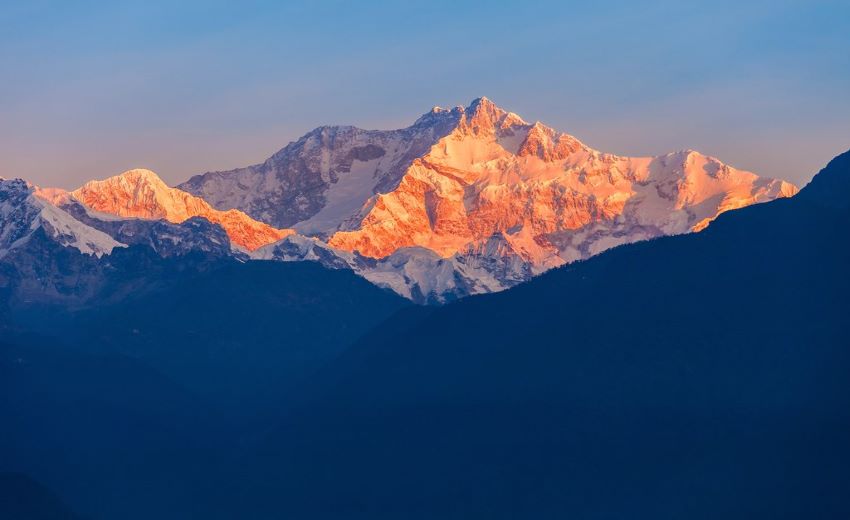
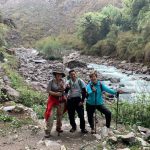 Wednesday, June 25th, 2025
Wednesday, June 25th, 2025
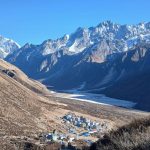 Sunday, June 22nd, 2025
Sunday, June 22nd, 2025
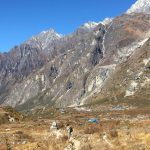 Saturday, June 14th, 2025
Saturday, June 14th, 2025
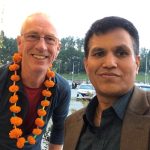 Sunday, June 8th, 2025
Sunday, June 8th, 2025
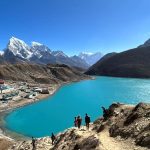 Wednesday, June 4th, 2025
Wednesday, June 4th, 2025
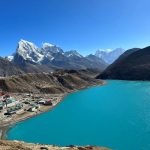 Wednesday, June 4th, 2025
Wednesday, June 4th, 2025
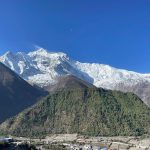 Friday, May 16th, 2025
Friday, May 16th, 2025
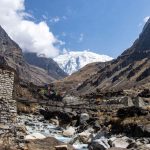 Friday, May 9th, 2025
Friday, May 9th, 2025
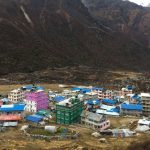 Tuesday, February 25th, 2025
Tuesday, February 25th, 2025
